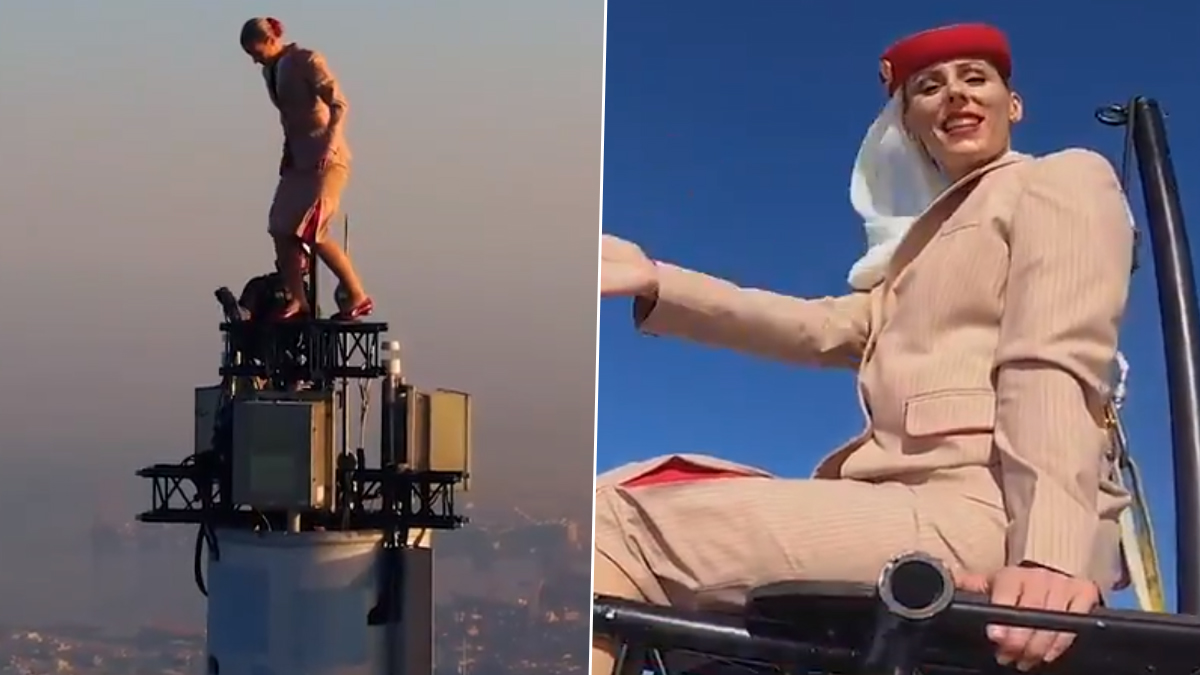Aviation
Emirates new advertisement 6 interesting facts , How they did it ?

How they did it ? Emirates new advertisement 6 interesting facts
As the new Emirates advertisement became an online hit after it surfaced on social media, many speculated that the video was shot in a green shed, however Emirates published a fresh behind-the-scenes footage of the advertisement.
- The ad was filmed without any green screen or special effects.
The ad was filmed without any green screen or special effects and was the result of rigorous planning, training, testing and a strict safety protocol. At the pinnacle of the building, the main protagonist had a reduced circumference space of only 1.2 meters at 828 meters high to pull off the stunt.
Emirates introduces Home Check-in in Dubai
- The climb took 1 hour and 15 mins from level 160 of the Burj Khalifa

Filming started at sunrise to catch the golden hour light and the team, including the main star of the ad, began their ascent to the pinnacle before sunrise. The climb took 1 hour and 15 mins from level 160 of the Burj Khalifa by Emaar and the team had to scale several tiers and ladders inside a tube to reach the top. The team was at the pinnacle for around 5 hours with the stunt woman
Emirates announces start of scheduled A380 service into Hamburg
- Ad Concept created by Emirates in House brand team.
At 828 metres above ground this marks one of the highest ads ever filmed and was conceptualized and directed by Emirates’ in-house brand team with the help of Prime Productions AMG, based in Dubai.
Emirates looks to windowless planes
- She joining an elite group of individuals stand at the on tallest building.
Yes, she joins only a handful of individuals who have had the privilege to stand at the pinnacle of the world’s tallest building – including Tom Cruise and the Crown Prince of Dubai, H.H Sheikh Hamdan bin Mohammed bin Rashid Al Maktoum.

- For to shoot ad safety remained the main priority.
Throughout filming and in preparation of the shoot, safety remained the main priority. A custom platform with an attached pole was built at the top for the protagonist to stand on. She was attached to the pole as well as two other different points directly to the pinnacle, through a hidden harness under the Emirates uniform.
To perform this advertisement A casting call was put out to Emirates’ very own cabin crew team and while there were some willing and capable candidates, a professional skydiving instructor was cast to ensure the highest levels of safety.

Aviation
Boeing, Antonov to Collaborate on Defense Projects

– MOU represents Boeing’s commitment to work with Ukrainian industry
– Includes exploring opportunities for collaborating on in-country support of Unmanned Aerial Systems
A Memorandum of Understanding was signed today by Boeing and Antonov Company to investigate potential collaboration on defense-related projects.
“We’re happy to keep collaborating with the Antonov Company to help Ukraine’s economic development and expansion,” stated Ted Colbert, CEO and president of Boeing Defence, Space, & Security.
Airbus and the Antonov An-225: The Best Partnership:Click here
“This agreement demonstrates our ongoing efforts to find more opportunities to work with Ukrainian industry, which was underscored by our signing of the Ukrainian Defence Industry Compact earlier this year.”
The areas of potential collaboration identified in the agreement consist of training, logistical support and overhaul services for tactical Unmanned Aerial Systems utilized by the Ukrainian Armed Forces, which includes the ScanEagle. In addition, the companies will also explore opportunities for Antonov to provide engineering support to Boeing.
The six largest cargo aircraft ever built in the aviation industry:Click here
“A strong, innovative, and efficient defense industry is key to sustainable economic development and national security, and we are extremely excited to collaborate with Boeing,” said Ievhen Gavrylov, CEO of Antonov Company.
This agreement brings a whole new level of opportunity to implement the latest and most effective solutions – in addition to the possibility of future projects with Boeing in the aerospace and defense industry.”
-

 Travel1 week ago
Travel1 week agoAir India to Expand US Operations with Three New Routes After a Decade
-

 Travel2 weeks ago
Travel2 weeks agoWhy We Should Avoid These Stamps in a Passport
-

 Airlines1 month ago
Airlines1 month agoInvestigations Reveal Fake Chinese Titanium in Boeing and Airbus Jets
-

 Tech4 weeks ago
Tech4 weeks agoChina’s CATL Plans 1,800-Mile Electric Plane Launch by 2027
-

 Airport3 days ago
Airport3 days agoTop 10 Largest Airports in the World by Size
-

 Aerospace4 weeks ago
Aerospace4 weeks agoChina’s Fighter Jets Turn Wings into Autonomous Drones
-

 Airlines4 days ago
Airlines4 days agoAir India Rolls Out A350s for Delhi-New York JFK and Newark Routes
-

 Defence3 weeks ago
Defence3 weeks agoBoeing Enhances Chinook with New Engines and Block II Upgrades at $96 Million







